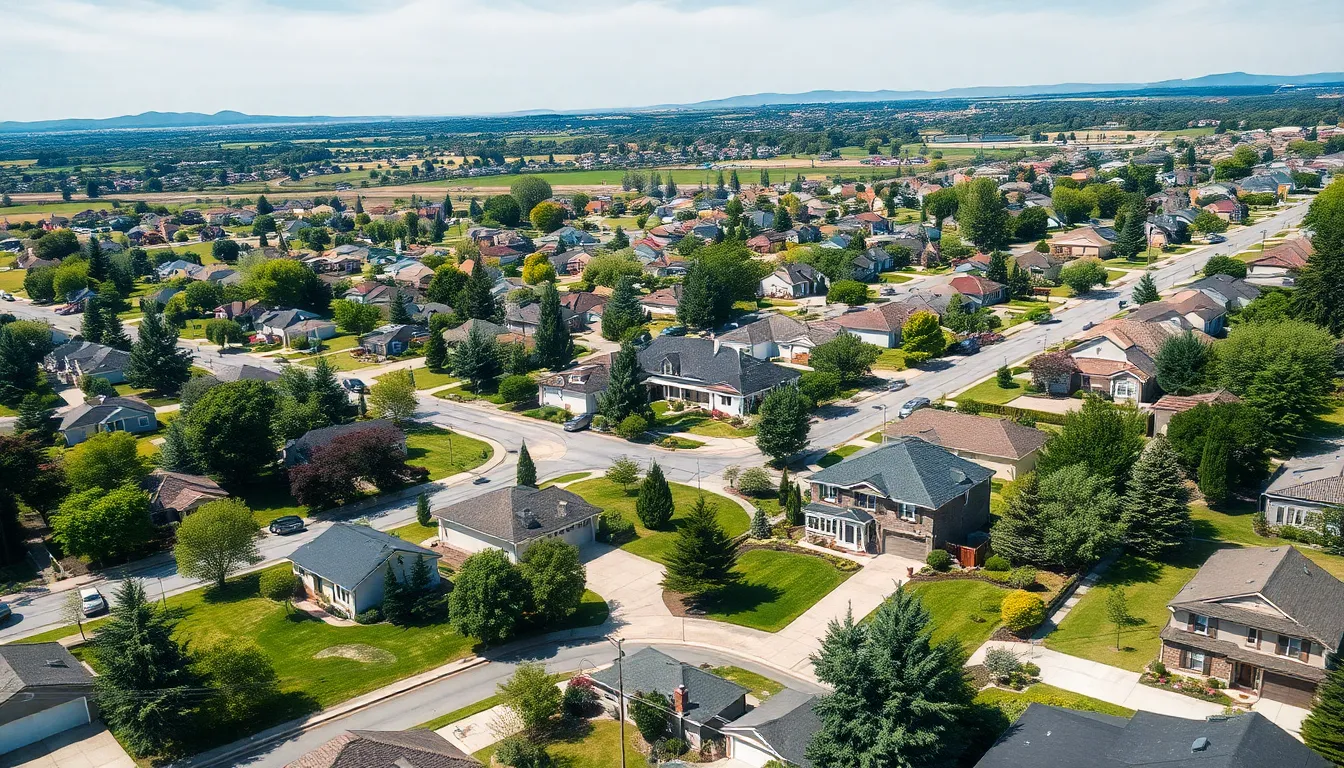In a world where avocado toast can cost more than a down payment, keeping up with real estate trends is no laughing matter. Whether you’re a seasoned investor or a first-time homebuyer, understanding the latest shifts in the market can make all the difference between a wise investment and a money pit.
Table of Contents
ToggleOverview of Real Estate Trends
Understanding real estate trends remains crucial in navigating today’s dynamic market. Supply and demand fluctuations significantly influence property prices. Recent data shows that housing inventory is tightening, resulting in increased competition among buyers. Investors often observe how this impacts their purchasing power and future returns.
Changes in mortgage rates can alter buyer behavior. A rise in interest rates tends to reduce affordability, pushing some potential homeowners out of the market. This shift may create opportunities for those with cash reserves, allowing investors to negotiate better deals.
Urban migration patterns are also notable. Many individuals are moving from densely populated cities to suburban or rural areas, seeking more space and affordability. This trend shifts the focus of real estate development, leading to increased demand for single-family homes outside urban centers.
Sustainability has gained importance among buyers. Properties with eco-friendly features attract a growing number of environmentally conscious consumers. Energy efficiency, green certifications, and sustainable materials appeal to today’s market preferences.
Finally, technology plays a significant role in shaping the real estate landscape. Virtual tours and online transactions streamline the buying process for both agents and buyers. As digital tools continue to evolve, they enhance transparency and accessibility in real estate transactions.
Staying informed about these trends allows investors and homebuyers to make well-founded decisions. Adjusting strategies to align with current market dynamics leads to successful investments.
Current Market Analysis

Market dynamics continuously evolve, influencing real estate trends across various sectors. Understanding these latest trends helps individuals make informed decisions.
Residential Real Estate Trends
Recent residential data shows dwindling housing inventory. Competition among buyers escalates, driving prices higher. Many potential homebuyers struggle with affordability as mortgage rates rise. The trend encourages cash-rich investors to seek out bargains. Suburban and rural areas gain popularity as families prioritize space and affordability over city living. Developers focus on single-family homes to meet this demand, reflecting changing lifestyle preferences.
Commercial Real Estate Trends
Commercial real estate adapts to new norms post-pandemic. Many businesses reevaluate their space needs, leading to increased demand for flexible office environments. E-commerce growth pushes demand for warehouse spaces, as logistics become critical for retailers. Urban centers may face challenges as more companies embrace remote work. Sustainability drives trends in commercial developments, with eco-friendly buildings attracting tenants. Investors increasingly prioritize properties that align with environmentally responsible practices.
Factors Influencing Real Estate Trends
Understanding factors influencing real estate trends is essential for both investors and homebuyers. Multiple elements, such as economic indicators and demographic shifts, play crucial roles in shaping market dynamics.
Economic Indicators
Economic indicators significantly affect real estate trends. Interest rates remain a primary factor, directly impacting affordability for homebuyers. When rates rise, potential homeowners experience decreased purchasing power, which affects demand. Employment rates also influence the real estate market; higher employment leads to increased consumer confidence and homebuying activity. Conversely, inflation can drive up construction costs, limiting supply. Gross Domestic Product (GDP) growth indicates a healthy economy, further promoting residential and commercial investments. Analyzing these indicators helps participants anticipate shifts in pricing and availability in the real estate market.
Demographic Shifts
Demographic shifts shape the real estate landscape in various ways. Age groups influence housing preferences; millennials and Gen Z tend to favor urban settings, while baby boomers often seek smaller homes or retirement communities. With increasing remote work options, the desire for larger living spaces has surged, encouraging movement to suburban and rural areas. Family sizes also dictate property sizes and types; buyers seek homes with more bedrooms as families grow. Additionally, cultural diversity drives demand for varied housing styles, reflecting globalization. Tracking these demographic changes enables stakeholders to make informed decisions aligned with current market trends.
Regional Real Estate Trends
Understanding regional trends is essential for making informed real estate decisions. Both urban and suburban areas are experiencing significant shifts influenced by various factors.
Urban Areas
Urban areas face unique challenges as housing demand fluctuates. High competition among buyers has driven prices up due to limited inventory. A 2023 report indicates that many city dwellers are relocating to find affordable living options. Businesses in these environments reassess their space needs, often opting for flexible office spaces. Growth in e-commerce also leads to increased demand for distribution centers within cities. Economic indicators play a pivotal role in shaping these trends as job markets evolve.
Suburban Areas
Suburban regions show notable growth as families seek more space. Many buyers prefer single-family homes, leading to a surge in new developments. The 2023 data highlights an influx of residents moving away from urban centers for affordable housing and better living conditions. Additionally, the availability of parks and recreational facilities adds to suburban appeal. Investors are keen on capturing this demographic shift, as millennials and Gen Z favor areas that offer work-life balance. Rising demand for larger homes and outdoor spaces reflects changing lifestyle priorities spurred by remote work.
Future Predictions for Real Estate Trends
Shifts in remote work trends continue to reshape real estate forecasts. Increased preference for flexible living environments emerges as more individuals value space and comfort over proximity to urban job centers. Innovations in technology, such as augmented reality and artificial intelligence, will impact property searches and transactions, enhancing user experiences and transparency.
Market analysts indicate that rising mortgage rates will likely persist, affecting buyer affordability. As a result, cash investors will seize opportunities in economically distressed markets, further driving demand for lower-priced properties. With evolving supply chain logistics, companies are expected to seek warehouse spaces closer to urban centers, reinforcing the need for strategic property acquisitions in logistics hubs.
An emphasis on sustainability will gain momentum as eco-friendly developments become a priority, attracting environmentally conscious buyers. Some developers are investing in green building practices to meet this demand, integrating renewable energy solutions and energy-efficient designs into new projects. Urban living space demand may decline as buyers seek larger properties that accommodate remote work setups.
Demographic trends signal a significant shift, with millennials and Gen Z populations leaning towards suburban home ownership. This group values community amenities and outdoor spaces, leading to increased interest in family-oriented neighborhoods. Alongside this, baby boomers are downsizing, driving demand for smaller, accessible homes tailored to aging populations.
Regional real estate markets will likely experience varied dynamics. Cities may continue to face challenges with high inventory competition, pushing potential buyers toward suburban and rural options. Investors and homebuyers must adapt strategies according to evolving market conditions, ensuring informed decisions that reflect current trends.
Navigating the ever-changing real estate landscape requires keen awareness of current trends and market dynamics. As buyers and investors adapt to rising mortgage rates and shifting urban migration patterns, understanding these factors becomes crucial for making informed decisions.
The ongoing demand for eco-friendly properties and flexible living arrangements highlights the importance of sustainability in future developments. By staying informed about these trends, individuals can position themselves strategically in the market, whether they’re seeking a new home or investment opportunities.
Ultimately, those who embrace these changes will be better equipped to thrive in a competitive real estate environment.


